Stool Sample in Molecular Biology Research:
- Utility and Applications:
- Stool samples are increasingly utilized in animal molecular genetics, population ecology, behavioral ecology, and intestinal disease diagnosis.
- They contain gut microbial DNA, food residue sample DNA, and alimentary tract exfoliated cell DNA.
- Challenges:
- Low content of exfoliated cells in the digestive tract and degradation of genetic material pose primary challenges.
- Presence of inhibitors such as polysaccharides, bile acids, bile salts, bile pigments, digestive juices, and mucus can affect PCR-based molecular analysis.
Importance of DNA Extraction:
Critical Role:
- Selecting appropriate extraction methods is crucial for obtaining high-quality DNA and ensuring successful downstream detection of stool DNA.
HiPure Stool DNA Kit:
- Solution Provided:
- The HiPure Stool DNA Kit from Magen Company offers a promising solution.
- Features good universality, high cost-effectiveness, high yield, and purification.
- Unique Features:
- Utilizes a unique solution system and inhibitory factor adsorbent to efficiently remove various impurities in stool samples.
- The purified DNA can be directly used for PCR, PCR cuantitativa, y otras aplicaciones.
- Efficiency and Ease of Use:
- Enables rapid and reliable isolation of high-quality genomic DNA from various stool samples.
- Capable of processing up to 100 mg of stool samples within 60 minutos.
- Combines reversible nucleic acid binding properties with columna de giro tecnología, eliminating PCR inhibiting compounds.
- Suitable for PCR, restriction digestion, and next-generation sequencing applications.
- Sustainability and Scalability:
- Eliminates the need for organic extractions, reducing plastic waste and hands-on time.
- Allows multiple samples to be processed in parallel, enhancing efficiency.
Detalles
Especificaciones
| Características | Especificaciones |
| Funciones principales | Isolation total DNA from 50-100mg stool samples |
| Aplicaciones | PCR, Mancha del Sur, enzyme digestion and NGS, etc.. |
| Método de purificación | Mini columna de centrifugado |
| Tecnología de purificación | tecnología de sílice |
| método de proceso | Manual (centrifugación o vacío) |
| Tipo de ejemplo | Heces |
| Cantidad de muestra | 50-100mg |
| Producir | 3-15µg |
| Volumen de elución | ≥30μl |
| Tiempo por carrera | ≤60 minutos |
| Volumen de transporte de líquido por columna | 750µl |
| Rendimiento de unión de la columna | 100µg |
Principio
Stool DNA Extraction Process:
- Homogenization and Lysis:
- Stool sample is homogenized and treated in a specially formulated buffer containing detergent.
- This step effectively lyses bacteria, levadura, and fungal samples present in the stool.
- Contaminant Removal:
- Our proprietary Absorber Solution is used to remove humic acid, proteínas, polysaccharides, and other contaminants from the lysed sample.
- Binding and Washing:
- Adjusted binding conditions facilitate the attachment of DNA to a DNA Mini Column.
- Two rapid wash steps are performed to remove trace contaminants, ensuring purity of the DNA.
- Elution of Purified DNA:
- Pure DNA is eluted from the column in a low ionic strength buffer.
- The resulting purified DNA is ready for direct use in downstream applications without the need for further purification.
Ventajas
- Alta pureza – unique adsorbent can completely remove inhibitory factors
- High concentration – maximum extraction of total DNA from stool samples
- Alta recuperación – El ADN se puede recuperar a nivel de PG
- Buena repetibilidad – La tecnología de sílice puede obtener resultados ideales en todo momento.
Contenido del kit
| Contenido | D314102 | D314103 |
| Tiempos de purificación | 50 preparativos | 250 preparativos |
| Minicolumnas HiPure DNA II | 50 | 250 |
| 2Tubos de recolección de ml | 50 | 250 |
| 2ml Bead Tubes | 50 | 250 |
| Proteinasa K | 24 mg | 120 mg |
| Tampón de disolución de proteasa | 1.8 ml | 10 ml |
| Buffer SPL | 40 ml | 200 ml |
| Buffer PCI | 40 ml | 200 ml |
| Amortiguador AL | 20 ml | 80 ml |
| Memoria intermedia GW1 | 22 ml | 88 ml |
| Búfer GW2 | 20 ml | 2 X 50 ml |
| AE de búfer | 15 ml | 30 ml |
Almacenamiento y estabilidad
Storage Instructions:
- Proteinase K and Buffer PCI:
- Upon arrival, store at 2-8°C.
- Short-term storage (hasta 12 semanas) a temperatura ambiente (15-25°C) no afecta su rendimiento.
- Remaining Kit Components:
- Store at room temperature (15-25°C).
- Stable for at least 18 meses en estas condiciones.
- Entire Kit:
- Can be stored at 2–8°C.
- Buffers should be redissolved before use if stored at this temperature.
- Ensure all buffers are at room temperature when used.

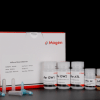
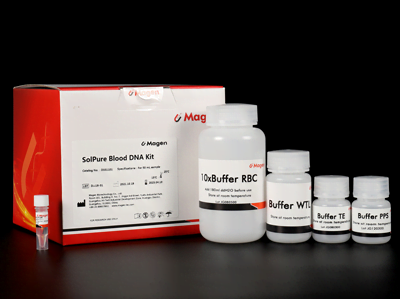
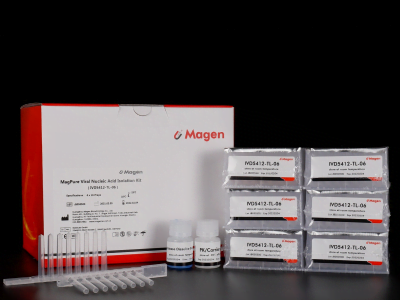
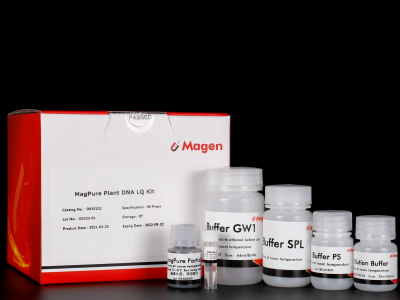
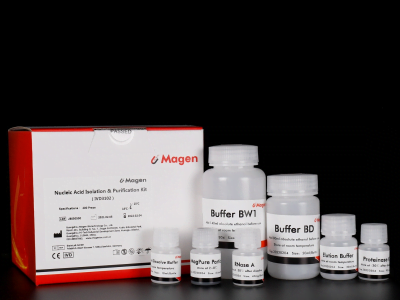
Reseñas
Aún no hay reseñas.